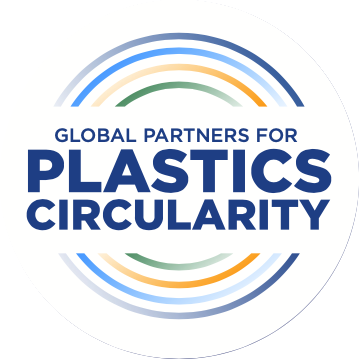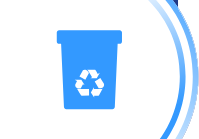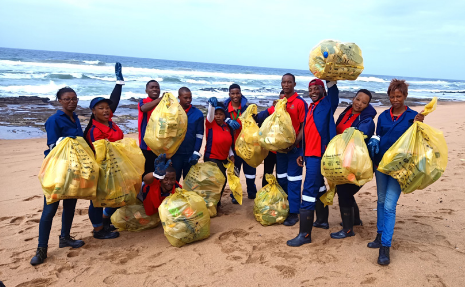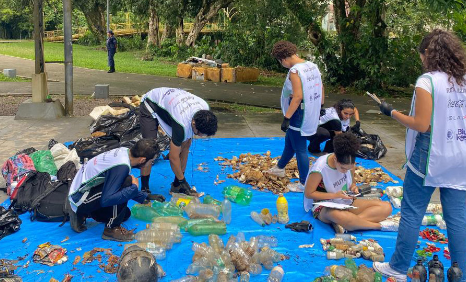
cleaning up plastic pollution: what works?
Cleaning up plastic pollution can contribute to better environmental and economic health of a community. Efforts to clean up plastic pollution have taken place all over the globe, and a lot of lessons have been learned on what makes these projects effective and lasting.

What We’re For: The best solution to address pollution of any solid waste is to prevent it from entering the environment in the first place through adequate waste management systems. In the absence of this, the global plastics industry continues to support and participate in plastic pollution cleanup projects. We’ve found these activities are most effective when in partnership with local communities, targeted to pollution hotspots, and when they precede the construction of new waste management and containment infrastructure that helps prevent new pollution from entering the environment.
Learn more about how two successful, large-scale and ongoing cleanup projects in South Africa and Brazil showcase some valuable principles and effective practices to consider when cleaning up plastic pollution in a community:
Cleaning Up Plastic Pollution: Principles and Practices to Consider
While each cleanup project will differ based on unique and local circumstances, there are common considerations and principles applicable to all projects.

1 |
The foundational step for addressing plastic pollution is to prevent it from it entering the environment, particularly in areas that lack adequate waste management at the community level. A community should prioritize prevention of new plastic pollution through recycling and waste collection efforts.

2 |
Cleanup projects linked to recycling programs help demonstrate the value of the recovered materials to communities and conserve plastic resources.
Connecting recycling programs that sort and remake plastics to cleanup activities enables participation of the informal sector and advances a more just transition toward a circular economy.

3 |
Community acceptance and local participation are key to a successful program. Effective cleanup projects must be driven locally and should involve trusted community leaders who understand their community and its culture.

4 |
Cleanup projects should avail themselves of the multiple existing, effective programs, many of which may have funding available (e.g. Ocean Conservancy, Big Blue Ocean Cleanup, and Alliance to End Plastic Waste are among the organizations that may provide support for local programs)

5 |
Data collection and reporting can help improve projects over time, including identifying sources of pollution and what interventions are most effective.

SOUTH AFRICA:
Cleanup And Recycle South Africa
BACKGROUND
39% of the South African population does not have waste management services. This results in a large amount of unmanaged waste that becomes pollution, which negatively impacts the environment and well-being of communities.
MORE INFO
SOLUTION
Plastics SA launched “Cleanup and Recycle South Africa” in 1996, initially focused on cleaning up beaches (in conjunction with ICC: International Coastal Cleanup Day/Ocean Conservancy) (Principal #4) and then inland roadsides, rivers and dams. The project later began tracking, sorting and recycling recovered materials (Principle #2 & #5). It now promotes and supports 10 annual environment days, providing cleanups and raising broad awareness about plastic recycling, solid waste best practices and the effects of litter (Principal #3). The project recently focused on river hot spots and is deploying catchment interventions to prevent litter from reaching the ocean (Principle #1).
RESULTS
In 2023, Clean-up and Recycle SA Campaign had approximately 120,000 people – including provincial coordinators, volunteers, NGOs and community members (principles #3 & #4) – clean neighborhoods and remove waste from beaches, river streams, parks and streets in South Africa. This was supported by the plastics value chain providing equipment and supplies for the cleanup activities and resulted in over 700,000 bags of litter being collected throughout South Africa.
FUTURE
The strategic focus of this project is now on river catchment areas that have been identified as litter hot spots and deploying site-specific interventions, such as waste management, education programs, waste management, and education programs and litter booms to prevent litter from ever making it to the ocean from the hot spots.

BRAZIL:
Blue Keepers
BACKGROUND
To tackle land-based sources of marine pollution, Brazil needed to identify the sources and types of plastic pollution and establish an organization to tackle it.
MORE INFO
SOLUTION
Blue Keepers Project is an initiative of the United Nations Global Compact Brazil under its Water and Ocean Platform (Principle #5) that brings together more 2,100 members, including academia, government and industry (Principle #4), to mobilize and apply resources to reduce plastic pollution in watersheds and the ocean.
RESULTS
In 2022, Blue Keepers diagnosed the sources of plastic pollution in
Brazil and also identified the likelihood of plastic pollution reaching the ocean through various sources, particularly waterways, which helps
targeting of hot spots/cleanup mobilization. The project has conducted
multiple cleanups and sample collections to remove waste from aquatic
environments by mobilizing community volunteers. It created a database of materials recovered and updates it regularly, the data is public and available by accessing its Webmap (Principle #5). Blue Keepers is now coordinating the design, installation and monitoring of floating barriers, eco-boats and other waste interception interventions that allow for the study of waste and immediate removal from the water (Principle #1).
